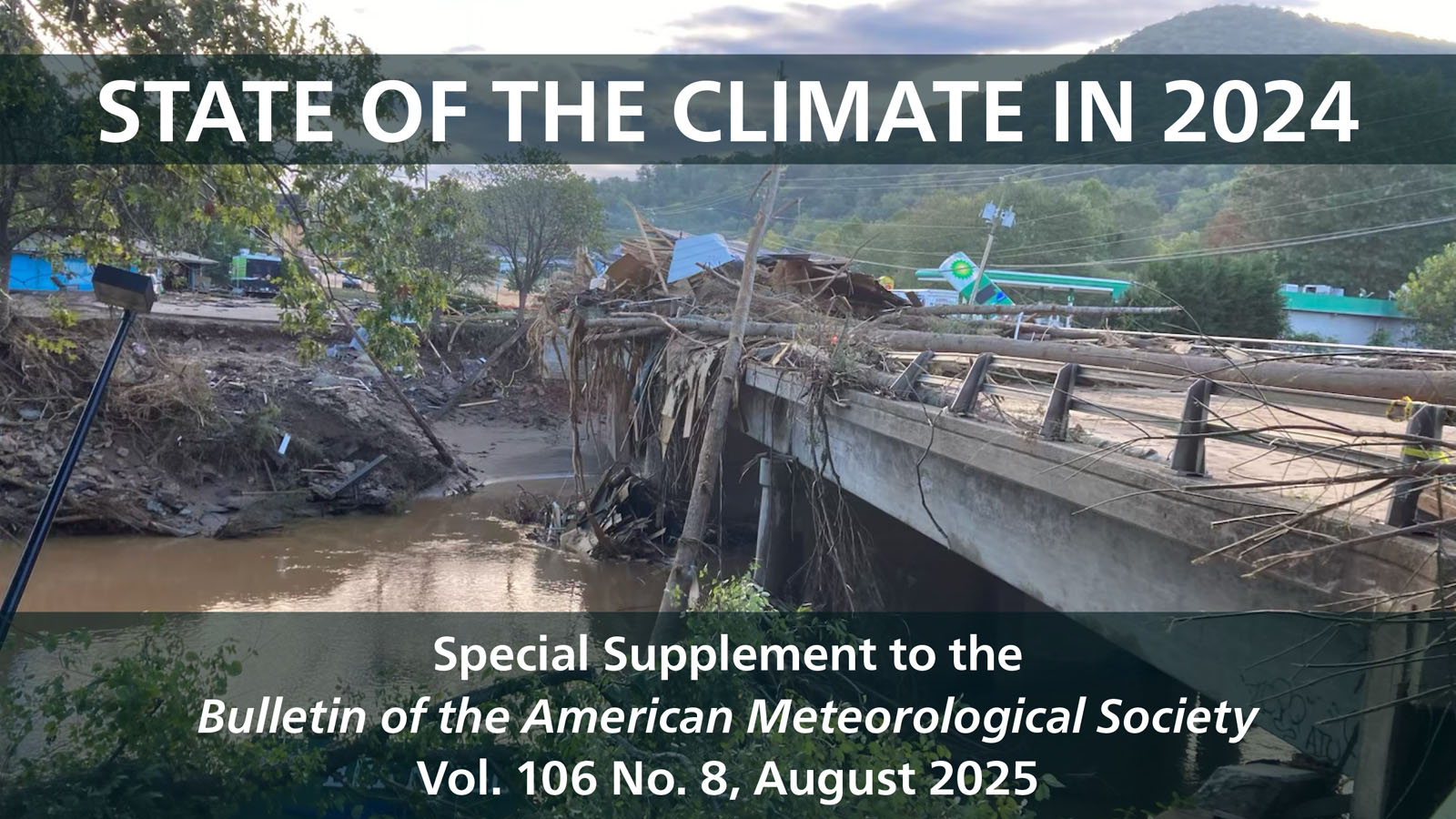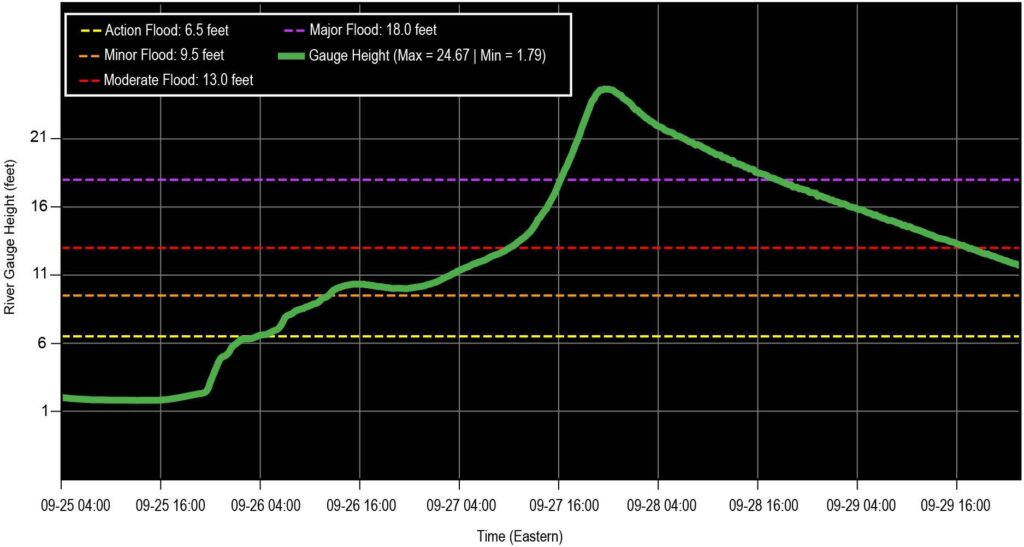
NCICS scientists make key contributions to the newly published annual assessment of the climate
The Bulletin of the American Meteorological Society released the latest edition of its annual State of the Climate report today. This peer-reviewed publication provides a detailed look at key aspects of the Earth system at both global and regional scales.
The 35th annual State of the Climate report found that in 2024 greenhouse gas concentrations, the global temperature across land and oceans, global sea level, and ocean heat content all reached record highs, and glaciers lost the most ice of any year on record.
The report is based on contributions from 589 scientists in 58 countries. As has been the case for many years, scientists at the North Carolina Institute for Climate Studies (NCICS) played key roles in the development of the report.
The report also includes detailed analysis of Hurricane Helene—a topic of particular interest to staff members at NCICS, which is based in Asheville.
Research Scientist Laura Stevens served as the editor of the North America section of the Regional Climates chapter, as she did for the previous year’s report. The chapter covers key temperature and precipitation metrics and significant weather events and impacts for Canada, Mexico, the contiguous United States, and Alaska (Hawai‘i, Puerto Rico, and other US territories are addressed elsewhere in the report).
Last year was the warmest year on record for North America as a whole, at 1.32°C above the 1991–2020 base period. Extreme weather events were unusually destructive. Canada set a record for insured losses (at more $8.5 billion Canadian dollars), and the US saw its second-highest annual number of billion-dollar (in US dollars) weather and climate disasters.
In a blog post that accompanied the report’s release, Stevens notes that thus far 2025 has featured more of the same, “including intense wildfires, record-breaking heatwaves, and devastating floods” and is also “on track to be one of the top-five warmest years on record for the globe.”
Senior Research Scholar Carl Schreck continued as co-editor of the Tropics chapter, which explores tropical cyclone activity, monsoons, the El Niño–Southern Oscillation, and other modes of variability, as well as important tropical cyclone events.
In his own blog post, Schreck notes that the Atlantic hurricane season was “very unusual.” Conditions favored a very active season, and June saw the earliest Category 5 in history (Beryl). But there were no storms from late August into September, Schreck writes, and “the season didn’t really get going until Hurricane Helene at the end of September, and then it stayed active the rest of the way.” Schreck, a resident of the Asheville area, also contributed a lengthy sidebar titled “Hurricane Helene: Inside western North Carolina’s historic flood.”

Hydrograph of the French Broad River gauge in Asheville, North Carolina, prior to, during, and following the passage of Hurricane Helene. BAMS State of the Climate 2024.
Stevens, in her blog post, offered her own reflections on being a climate scientist experiencing a climate disaster firsthand. Living in western North Carolina during Helene, “I saw the true power of human resilience as we recovered from the damages,” she writes. “Seeing communities come together in the wake of the storm proved how important my work is.”
Other NCICS contributors to State of the Climate include Climate Data Analyst John Uehling, an author on the Tropics chapter; Research Associate Garrett Graham, an author on the Global Oceans chapter; and Visual Communications Specialist Jessicca Allen, who helped prepare and polish many of the complex figures presented in the report.
The 2024 State of the Climate report is available now at https://doi.org/10.1175/2025BAMSStateoftheClimate.1
For more information and links to previous editions, see the BAMS State of the Climate web page.
